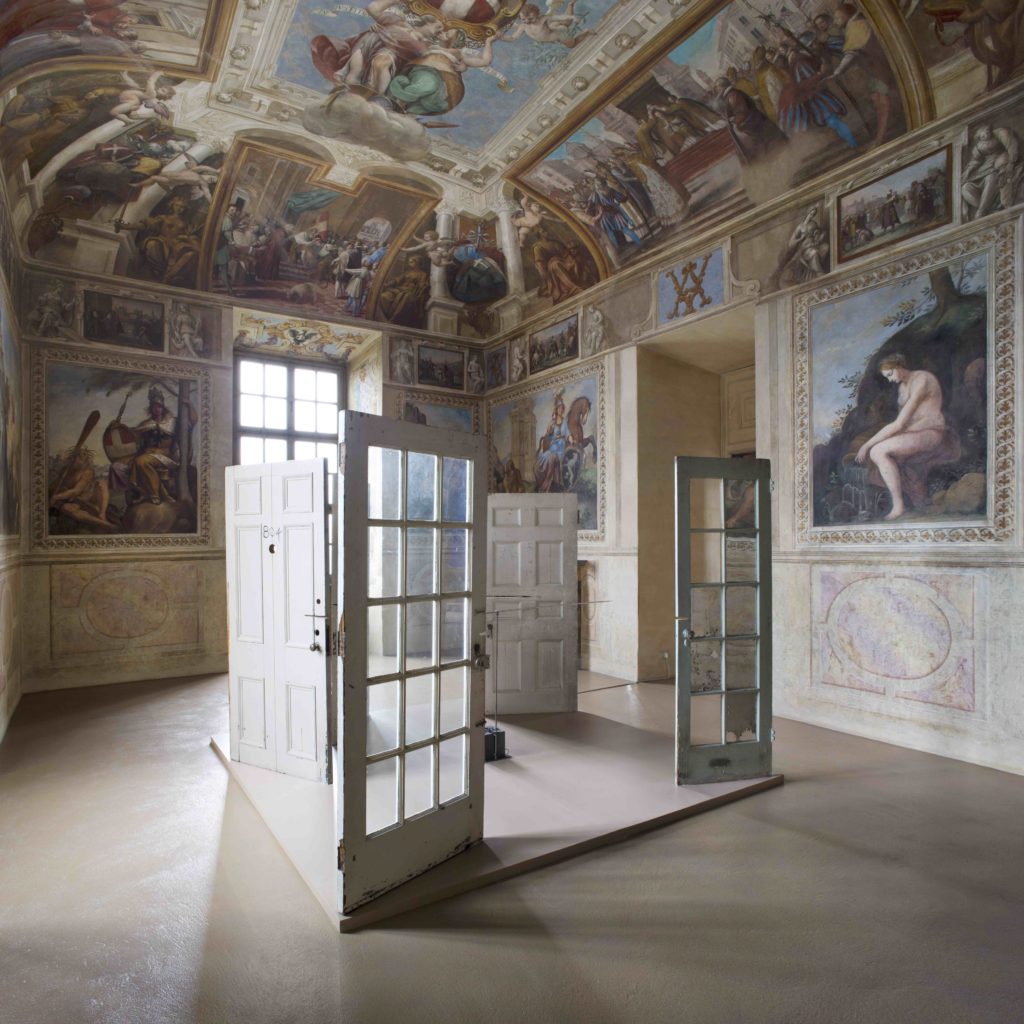Rebecca Horn
Throughout her career, Rebecca Horn has engaged in a form of art that crosses defined boundaries of specific visual languages. Her work encompasses performance, drawing, sculpture, installation, and film. Machines, quasi-anthropomorphic mechanical devices, are essential components of many of her creations. Their movements and interactions create a disturbing theater—often configured to mirror the defined space of human relationships—within which obsession, desire, and power relationships are protagonists.
In Cutting Through the Past, 1993, five doors that bear the signs of time are installed on a platform. Their humble nature suggests a domestic environment, within which private stories unfold. A pointed metal rod is positioned horizontally at the center of the platform. Activated by an electronic motor, the rod completes a 360-degree rotation, touching each of the doors and carving its tip into them with a light but cruel gesture. Rich in erotic implications, the movement also evokes a situation marked by conflict, in which the relationship between the parts in play implies their progressive destruction.
In Miroir du Lac (Mirror of the Lake), 2004, Horn draws visitors into her own mechanical universe, capturing the image of each visitor who approaches. The work consists of two circular mirrors, one installed on the floor, the other on the ceiling, producing an effect of infinite depth. The totality suggests a well, symbolically extended upward and downward. A metaphor for the cosmos in many traditions and cultures, the well summarizes the different orders of sky, earth and underworld, presenting itself as a means of communication among them. An ideal source of life, the well seals the union between water, earth, and air. A holder of secrets, it is also an image of knowledge and truth. The horizontally pivoted movement of the mirror installed on the floor produces a perceptual vertigo, overturning the secure geometry that is otherwise provided by ceiling and floor into its dynamic opposite.
[M.B.]

